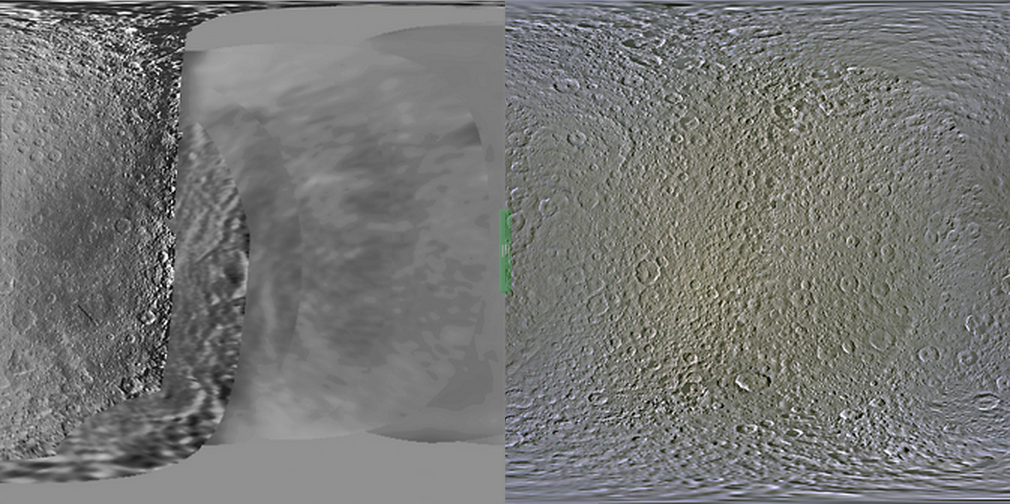The surface of Dione as captured by Voyager 1. Image via Wikimedia Commons
Having spent the past 10 years collecting images and other data on Saturn’s moons, NASA’s Cassini spacecraft has offered much more incredible images than the Voyager images that came before them.
One of Cassini’s original objectives was to obtain detailed, colour maps of Saturn’s six icy moons – Mimas, Enceladus, Tethys, Dione, Rhea and Iapetus – which it has now achieved, greatly improving on both the Voyager 1 and Voyager 2 missions that dated back to the early 1980s.
According to US space agency NASA, these new colour maps are the first to show natural brightness variations and high-resolution colour together.
Colours in the maps represent a broader range than human vision, extending slightly into infrared and ultraviolet wavelengths.
The differences in colour across the moons’ surfaces that are subtle in natural-colour views become much easier to study in these enhanced colours.
The obvious exception not included in the new images is the largest of Saturn’s moons, Titan, which could not get a fair representation of its surface because of its dense, hazy atmosphere. Titan is the only moon known to have such a climate.
The new maps were produced by Paul Schenk, a participating scientist with the Cassini imaging team, and is a co-operative project of NASA, the European Space Agency and the Italian Space Agency.
Aside from a gap in the north polar region of Enceladus (to be filled in next year), and some areas of Iapetus, this objective is now more or less complete.
Images of Saturn’s moons
The images on the left are from Voyager 1 and Voyager 2 while the images on the right are from Cassini.

Dione

Enceladus

Iapetus

Mimas

Rhea

Tethys
All Saturn moon images via NASA/JPL-Caltech/SSI/LPI